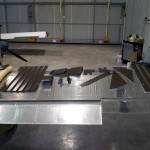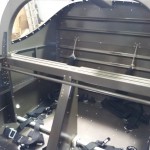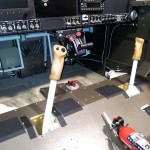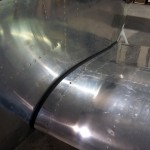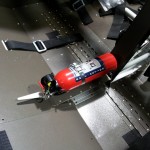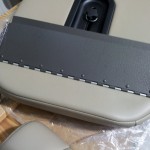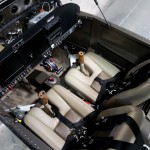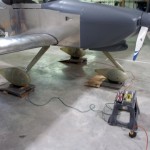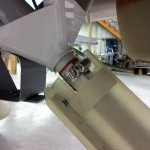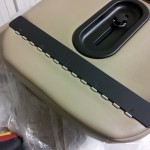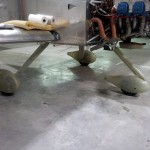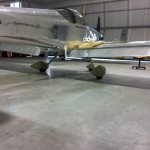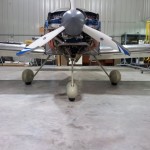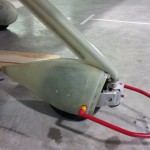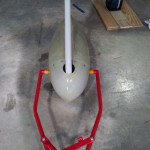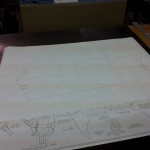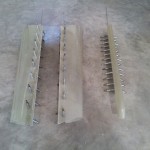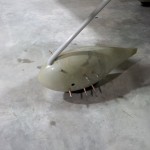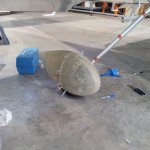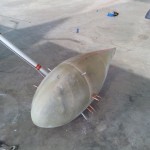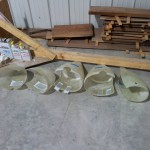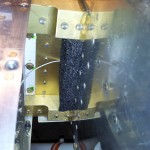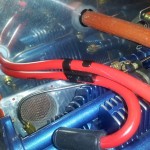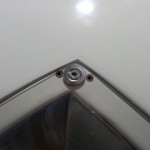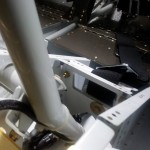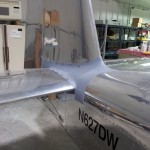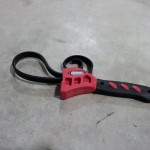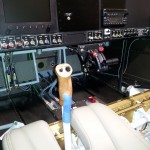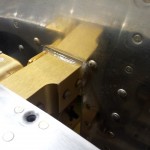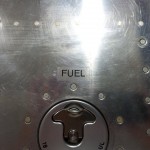Asking her weight
Today was the day to weight the plane, I hauled the scales to the hangar and spent the afternoon getting ready. Essentially, this meant installing every panel, cover, piece of equipment, cowling, and so forth, to get the airplane to the same weight condition it will be for flight. The process took several hours to complete, and I ran out of screws and washers when I was several short of the end. I did get everything installed, though, inside and out. Wing root fairings, cowling, forward carpet.
I also remounted the fire extinguisher on the tunnel cover between the seats, as I mentioned earlier. Menard’s didn’t have any suitable spacers that I could find, so I just used a stack of large-area washers for now; I’ll replace them with something lighter when I find or make it.
Once all the panels and covers were on, I installed the seats and the seatback braces, then adjusted the shoulder harnesses and trimmed the excessive extra length off the strap that runs aft; there’s still plenty left, I could probably trim another 18 inches, but just in case, I’ll wait until after I’ve flown and had a chance to adjust everything.
Drained all the fuel out of the tanks, too.
With everything set, I rigged up the scales, blocks, and ramps, and hauled the plane up onto them. Moment of truth…turns out she’s a bit of a big girl. 1103 lbs. I was surprised, since I have a light prop, non-oversized engine, minimal interior, and only a partial panel. I’ll have to poke around a bit and see how bad it is, but I seem to recall mid- to high-1000′s (1050-1090) being more normal.
Even with the higher weight, the CG seems fine, and all the loading scenarios I can think up are within the envelope. So it comes down to a matter of how much weight there is to add additional equipment before it starts to cut into useful load that’s actually used.
I blame all the primer and interior paint for the weight, and I know some of my fiberglass work isn’t as light as it would be, if someone who knew what they were doing with glass did the work.
So, now I can finish up the airworthiness paper trail and set the government cogs in motion, to bring first flight one step closer.
Hours: 7.0 | Posted in Endgame | Comments Off
